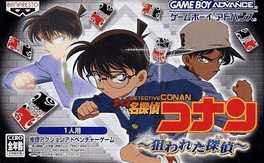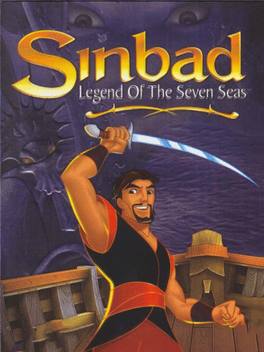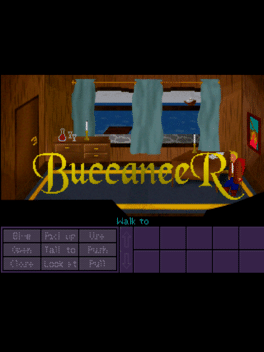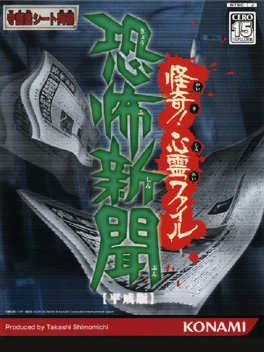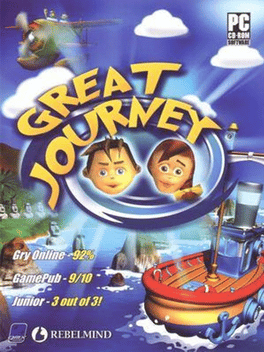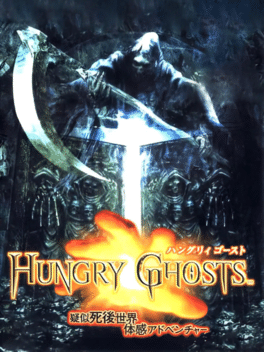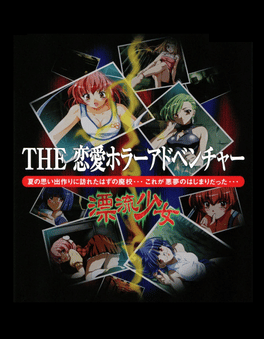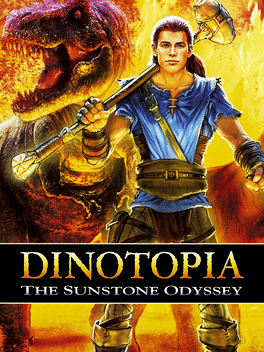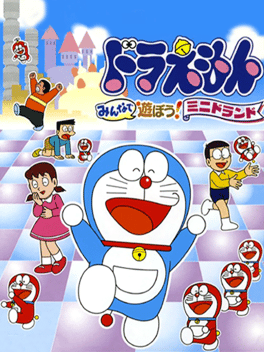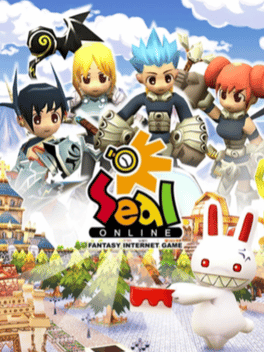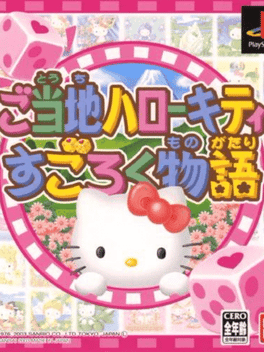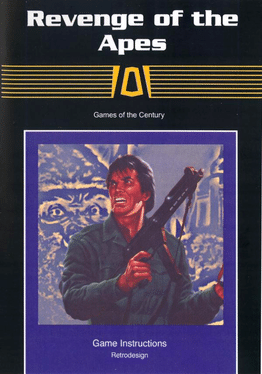New Adventure Games - Page 419
-
Detective Conan: Nerawareta Tantei
2003
Detective Conan: Nerawareta Tantei is an Adventure game, developed by Fortyfive and published by Banpresto, which was released in Japan in 2003. -
Sinbad: Legend of the Seven Seas
2003
A video game based on the film, titled Sinbad: Legend of the Seven Seas, was released on August 21, 2003. Published by Atari and developed by Small Rockets, it was released for PC. -
Hamster Club 4: Shigessa Daidassou
2003
Hamster Club 4: Shigessa Daidassou is an Adventure game, developed by Nekogumi and published by Jorudan, which was released in Japan in 2003. -
Buccaneer
2003
Buccaneer
2003
Amsterdam, 1627. You play as Richard McRoch, a retired Buccaneer who’s been given permission to set up as a trader in the Netherlands. One morning, Richard wakes up and finds his manifests have gone missing… -
GET! Boku no Mushi Tsukamaete
2003
GET! Boku no Mushi Tsukamaete is an Adventure game, developed by Wizard and published by Kemco, which was released in Japan in 2003. -
Kyoufu Shinbun Heisei-ban: Kaiki! Shinrei File
2003
One of several adaptations of Jirou Tsunoda's 'Kyoufu Shinbun' manga, this one is a visual novel/third-person adventure. Your protagonist has been cursed by the titular paper, which warns of terrible events to come in the future. During the day, he talks with family & friends, making dialogue choices along the way. At night, he investigates relevant locations. An interesting combo, to be sure. Kyoufu Shinbun Heisei-ban: Kaiki! Shinrei File is a Adventure/Horror video game published by Konami released on August 7th, 2003 for the PlayStation 2. -
Great Journey
2003
Great Journey
2003
Do you like adventures? Would you like to travel the world? Then don't waste any more time and join Tony and Annie on their mission to save Antarctica, home of their dear friends! Immerse in a thrilling adventure and visit lots of vibrant sceneries - from small port towns, through hot, sandy deserts and damp, colorful jungle, all the way to the land of snow and ice. Based on a mainstream technology from our previous game - Grom, making use of enchanting, prerendered backgrounds and smoothly animated, real-time 3D characters, the game looks and feels different than other titles from this genre available on the market today. -
Hungry Ghosts
2003
Hungry Ghosts
2003
Hungry Ghosts is a first person adventure game released only in Japan for the PlayStation 2. The player guides a guilty soul through the after world in search of redemption. -
Simple 2000 Series Vol. 34: The Renai Horror Adventure - Hyouryuu Shoujo
2003
The Renai Horror Adventure - Hyouryuu Shoujo: It's a summer night and school shouldn't be where you're at but there you are with five lovely classmates. It's a group study session but an strange occurrence plunges the school underground and traps you and cohorts inside the storied halls of learning. Use the resources of your classmates and your own knowledge to find a way out of the school and return to your plain-Jane life. -
Dinotopia: The Sunstone Odyssey
2003
star 3.4Dinotopia: The Sunstone Odyssey is a 2003 action-adventure video game released by Vicious Cycle Software. The game is based on the Dinotopia book series. -
Aquaman: Battle for Atlantis
2003
star 3.5Aquaman: Battle for Atlantis is an action-adventure video game for the Xbox and GameCube systems. Developed by Lucky Chicken Games and published by TDK, it is based on Peter David's interpretation of the DC Comics character Aquaman. -
Doraemon: Minna de Asobou! Minidorando
2003
Doraemon: Minna de Asobou! Minidorando is an Action game, developed by Agenda and published by Epoch, which was released in Japan in 2003. -
Seal Online
2003
Seal Online
2003
Seal Online is a Massively Multiplayer Online Role-Playing game launched in 2007 on United States by Playwith Interactive being one of the most durable and remarkable tittles nowadays. All begins when the world was first created, it was peaceful and everyone’s lives were bountiful under the auspices of the benign Elims. However, when the Balie was born from the Elim’s shadows, chaos ensued over the land. The endless war between the Elims and the Balies razed the world and the earth were no longer able to embrace anything. Elios, the Elim’s Master held fast to a piece crumbling land and collected all the Elims, Balies, and other dying organisms on top of it. That is how Shiltz was created. Players have to choose between 8 classes each one with 2 specializations to be learned at lvl 150, for example, the Craftman that can become a great Artisan or a ruthless Demolitionist. There are also special contents like Couples system with exclusive game store, fishing, crafting, refining, pets raising, battle pets, stree -
Dino Crisis 3
2003
Dino Crisis 3
2003
star 2.5Dino Crisis 3 is a survival horror video game released exclusively for the Xbox. It is the fourth and final game in the Dino Crisis series. Like the previous iterations of the series, gameplay revolves around fighting dinosaurs. Unlike the first three installments of the Dino Crisis series, the enemies in the game are not real-world dinosaurs, but new species created through advanced genetic engineering technology. The action takes place in outer space, on a starship, the Ozymandias. -
Space Quest 0: Replicated
2003
A prequel to Space Quest 2, but set before Space Quest 1, it is written in AGI and uses a parser input system similar to that of Space Quest 1 and 2. -
City of Secrets
2003
City of Secrets
2003
A train journey abruptly cut off. An enforced stay in a strange City. Intrigue, madmen, and growing sense of being watched... A work of interactive fiction by Emily Short. -
Gotouchi Hello Kitty Sugoroku Monogatari
2003
Gotouchi Hello Kitty Sugoroku Monogatari is a game developed by Sanrio Digital and published by Bandai, which was released in Japan in 2003. The game features 2d cartoon graphics & up to 4 human players or play against 1 or 3 computer players. -
Cubix Robots for Everyone: Showdown
2003
star 3Cubix: Robots for Everyone - Showdown is a futuristic themed 3D action adventure game based on the Cubix: Robots for Everyone TV series. In the game the player takes control of either Connor or Abby and has to explore Bubble town by solving puzzles and battling robots. You have the ability to jump and move objects. The robot battles are turn-based and when won the robot is added to your battle team and can be used in the next battle. More than twenty-five robots can be collected. Cubix the main robot can transform into several vehicles. The game also includes mini-games that can be played with up to four players. -
Die Bücher Luzifers 2
2003
Die Bücher Luzifers 2 is the sequel to Kelven's Die Bücher Luzifers. The player is once again tasked to find the origin of all the demonic chaos happening, this time in New York City. The gameplay stays close to it's predecessor while improving the graphics and letting the battles themselve take place in the actual environment, instead of a special arena for each fight. Unfortunately the game was cancelled after it's demo release in 2003. -
Revenge of the Apes
2003
Revenge of the Apes
2003
Planet of the Apes, later released as Revenge of the Apes, is a video game originally developed in 1983 by 20th Century Fox for the Atari 2600. Planned as the Planet of the Apes franchise's first video game, it was still in the prototype phase when Fox shuttered its game division during the video game crash of 1983. It went unreleased and was assumed lost until 2002, when collectors identified a mislabeled cartridge as the missing Planet of the Apes game. It was completed and released as Revenge of the Apes by Retrodesign in 2003.
